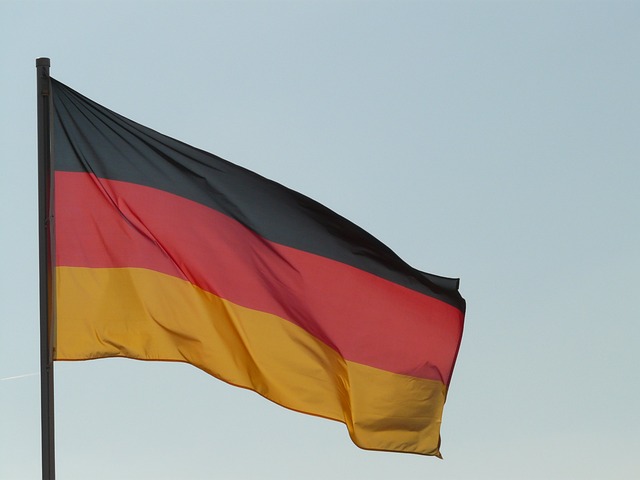HCOB Flash Germany PMI®
Conditions in Germany’s private sector continued to deteriorate at the start of the fourth quarter, as businesses reported further decreases in output and employment amid weak underlying demand, according to the latest HCOB ‘flash’ PMI® survey compiled by S&P Global. Although the output decline slowed slightly in October, the reduction in employment accelerated, marking the steepest drop in workforce numbers in nearly four-and-a-half years. Business expectations rose after turning negative in September for the first time in a year, yet optimism remained subdued compared to historical standards.
Significantly, recent data showed almost no change in average prices charged by German businesses, as services inflation slowed and manufacturing output prices experienced their steepest cuts since September 2009.
In October, the headline HCOB Flash Germany Composite PMI Output Index increased slightly from September’s seven-month low of 47.5 to 48.4. However, it remained below the 50.0 threshold, indicating ongoing contraction since July. While the decline in manufacturing production remained sharp (output index at 42.4), it did ease slightly from the previous month. The service sector, showing some resilience, registered growth in business activity for the eighth consecutive month, with the rate of growth ticking up to a modest level (index at 51.4).
The survey highlighted persistent weaknesses in demand, with new business inflows decreasing sharply for the fifth month in a row in October. The decline was led by manufacturing, where economic uncertainty and weak demand from the automotive sector discouraged spending. Additionally, the service sector saw a second consecutive monthly drop in new business, partly due to challenges in the goods-producing sector. However, the decline in new orders eased somewhat compared to September.
The lack of incoming work was evident in the continued decrease in outstanding business in October, prompting firms to reduce staffing capacity for the fifth month in a row. The rate of workforce reduction was the fastest seen since June 2020, with a notable retrenchment in manufacturing and an acceleration of job losses in the service sector.
Despite the accelerated employment decline in October, business expectations improved, with more firms forecasting increased activity over the coming year compared to those predicting declines—a reversal from the situation at the end of the third quarter. This improvement was largely driven by a rebound in service sector optimism, while manufacturing sentiment remained close to September’s 11-month low and solidly negative. Overall, business expectations remained well below the long-term average.
On the inflation front, average prices charged by German businesses were broadly unchanged in October. While services output prices continued to rise, the rate slowed to the lowest in three-and-a-half years (though still faster than the pre-pandemic long-term average). Concurrently, October saw more aggressive price cuts among goods producers, with factory gate charges registering the steepest drop in over 15 years.
Meanwhile, average input costs rose at a modest rate, similar to September’s 14-month low. Wage increases contributed to a continued rise in service providers’ operating expenses, but the overall inflation rate in the services sector remained on a downward trend, reaching its lowest point since February 2021. Manufacturers faced another substantial decrease in purchase prices due to competitive pressures, though the rate of decline moderated slightly compared to the previous month.
Commentary: Dr. Cyrus de la Rubia, Chief Economist at Hamburg Commercial Bank, commented on the flash PMI data:
“The start of the fourth quarter is better than expected. With services growing at a faster pace and manufacturing shrinking less sharply than the previous month, growth in the fourth quarter remains a distinct possibility. Even so, GDP may remain flat for the year as projected by the International Monetary Fund, following a 0.3% decline in 2023. This highlights structural weaknesses in the German economy, such as high energy costs, increased competition from China, and labor shortages—all of which are impacting the manufacturing sector heavily.
“It’s encouraging that services activity expanded at a faster pace in October, following four consecutive months of slowing growth. And although service companies have reduced employment more than in September, business expectations have improved significantly. This aligns with the perception that German consumers began spending more over the summer due to higher wages and lower inflation, as indicated by official retail sales figures. This trend appears to be continuing, with the services sector resuming its stabilizing role in the broader economy.
“The survey results offer tentative signs of potential improvement in manufacturing. Although output and employment are still contracting, the rate of decline has slowed somewhat compared to September. Crucially, the sharp drop in new orders that persisted over the past several months has begun to ease. Manufacturing will likely remain in recession through the fourth quarter, but it could enter the new year in a somewhat stronger position. However, caution is advised, as this outlook is based on just one month of improvement.”
Source: S&P GLOBAL
Legal Notice: The information in this article is intended for information purposes only. It is not intended for professional information purposes specific to a person or an institution. Every institution has different requirements because of its own circumstances even though they bear a resemblance to each other. Consequently, it is your interest to consult on an expert before taking a decision based on information stated in this article and putting into practice. Neither Karen Audit nor related person or institutions are not responsible for any damages or losses that might occur in consequence of the use of the information in this article by private or formal, real or legal person and institutions.






